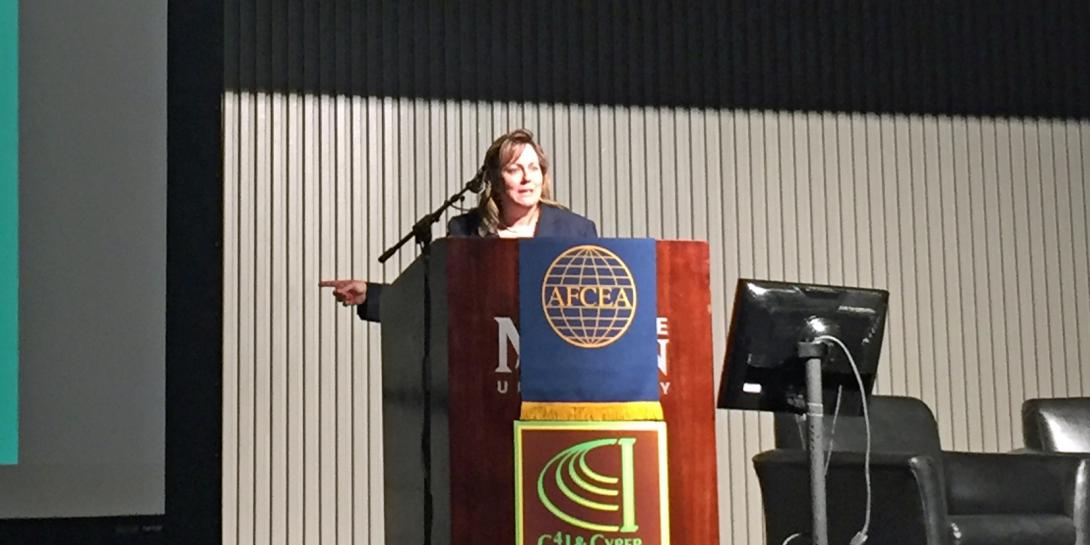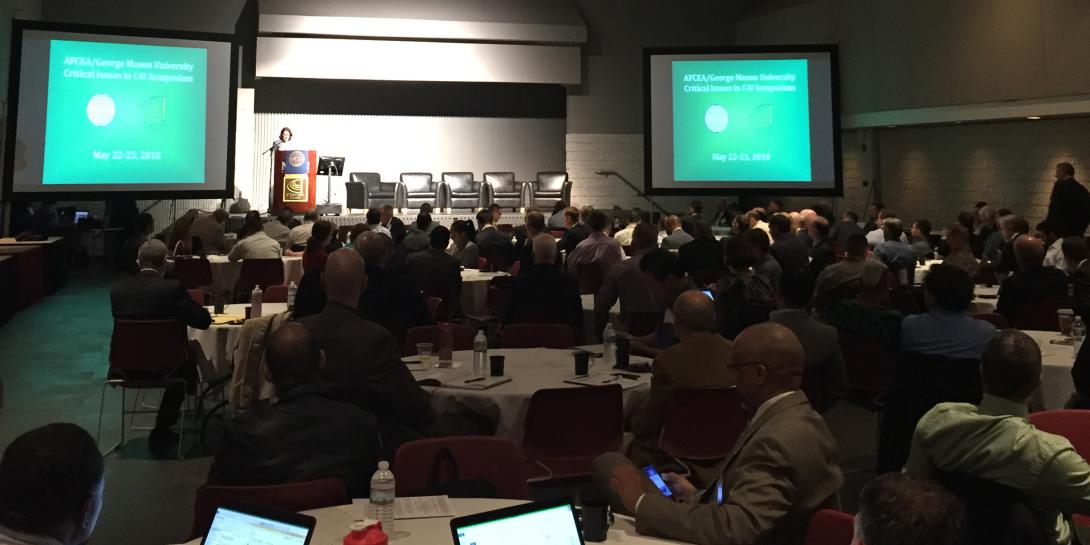Creating Situational Awareness with Analytics
Situational awareness is key to cybersecurity and using analytics can help create the situational awareness needed to defend the nation from adversaries. “Never before have we had the tools that we have today to understand the environment we’re in,” said Roberta “Bobbie” Stempfley, director, Carnegie Mellon University’s Software Engineering Institute, CERT Division, during her morning keynote at the AFCEA-GMU Critical Issues in C4I Symposium.
“The good news is we have virtual mountains of data to help us understand,” she said. But that’s also the bad news. “How do we analyze terabytes of data and turn it into something meaningful that humans can understand at scale and at speed?”
Data science is a good place to start. According to Stempfley, that means using data to understand actual phenomenon. “And data scientists like to remind us that it’s not just about the computers,” she said. “We need more than automation and orchestration. We need adaptation from humans as well. Software isn’t getting any smarter.”
Visualization can help humans process data. “We can teach individuals what to look for,” Stempfley stated. But human analysis is expensive and there aren't enough people to complete the task on their own.
Leveraging the strength of humans and machines is essential to putting the puzzle together, Stempfley said. Humans need to interface with machines and more importantly they need to trust them. “We know that in order to do what we have to solve, we have the incredibly important problem of trust,” she stated.
Though humans tend to give machines explicit tasks and want automated responses and sensing, they also want implicit responses. Did the machine execute the task safely and smartly? How do we get transparency from the machines that will help humans understand what they’re doing? “Uncertainty persists here. This is the challenge of autonomy today,” Stempfley stressed.
Humans should also be developing algorithms that can translate robot actions into usable human language. In order to improve trust and create explanations, translations and user preferences, humans need to understand why the machine handled the data the way it did.
“We need humans on the loop, not in the loop,” Stempfley said. “Machines don’t understand that every piece of data comes with context. But humans do. Situational awareness is pieced together and textual, much like a mosaic.”
“That’s the call to action today: How do we build this mosaic to support the entire community?” Stempfley asked. Gathering data from a variety of places, understanding cognition and perception, and building trust among humans and machines by focusing on the vocabulary, and not just the technology, will go a long way.







Comments